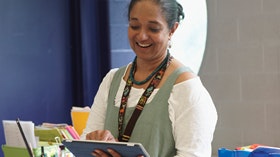Homepage
•
Learning Library
•
Blog
•
STANDARDS SPOTLIGHT: Tools to support the ISTE Standards for Educators
Expand breadcrumbs
Expand breadcrumbs
- Learning Library
- Blog
- STANDARDS SPOTLIGHT: Tools to support the ISTE Standards for Educators
- Homepage
- •
- Learning Library
- •
- Blog
- •
- STANDARDS SPOTLIGHT: Tools to support the ISTE Standards for Educators
STANDARDS SPOTLIGHT: Tools to support the ISTE Standards for Educators
By Kristin Harrington
December 15, 2017








